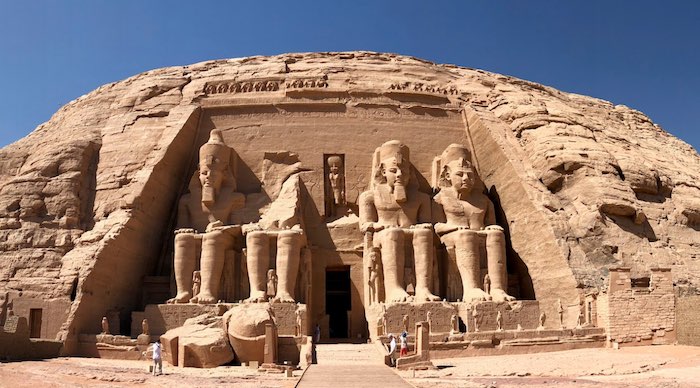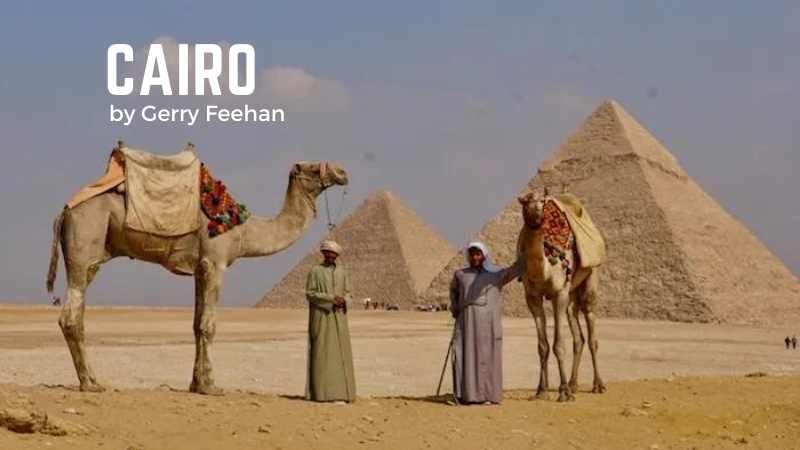Gerry Feehan
“The most-beautiful place in the world?” Gerry Feehan finds out at Lake O’Hara Lodge, Yoho National Park

Lake O’Hara, by Gerry Feehan
A Red Deer friend described Lake O’Hara Lodge in Yoho National Park, B.C. as the most beautiful place she’d ever been. I have done a fair share of travel to earth’s exotic and amazing places, so my expectations for our three-day visit to O’Hara were tempered with a grain of salt.
“…At every turn a mind-blowing vista opened before us. But always – far below – lay Lake O’Hara, an artist’s palette in aquamarine, the Lodge a tiny wooden appendage at its shore…”
The Lodge, accessible only by bus up a dusty gravel road, is tucked in the mountains west of Lake Louise. We were fortunate to secure a stay. Demand during the short summer season necessitates booking a year in advance – and priority is given to repeat clients, many of whom travel from around the globe to enjoy the natural beauty of this unique Rocky Mountain destination.
Our trip had an inauspicious beginning.
The O’Hara bus departs daily for the Lodge at 9 a.m. sharp from a parking lot near the TransCanada Highway. Rather than arise at 5 a.m. and drive from Red Deer to the O’Hara pick-up spot, we elected to spend a night at a BnB in Field, B.C. It was record-breaking hot that evening. Dinner was excellent – rainbow trout on a bed of wild rice – but the moment we turned in for the evening the hotel power quit. No lights, no TV, no a.c.; just darkness and heat.
A young woman came ‘round with a flashlight in the pitch-black offering solace: “Wow, this happened last week too. No power for 47 hours. We had to throw out most of our food.” I tossed and turned through the night’s sultry darkness, wondering whether my supper had endured the earlier blackout and was contemplating a fishy re-appearance.
Miraculously the power returned moments before our 8 a.m. checkout, in time for the hotel’s Visa machine to accept payment.
The drive into O’Hara was unimpressive: a bumpy ride on a school bus with six friends, plus a bunch of solemn strangers, all of us overburdened for the short stay with luggage, backpacks, hiking poles and superfluous personal items (in my case ineffective fishing gear). Eleven kilometers later we turned the last dusty corner. The Lodge and lake appeared in timeless beauty. Smiles erupted at the sight of rough-hewn timbers meeting cerulean waters.

The boys fording a creek.
While the staff discreetly unloaded our bags we were briefed in the rustic lobby and offered a pack lunch for our first day-hike. Camelbacks filled, our best lederhosen donned, off we went a wandering.
One of our companions, a Red Deer Judge, is not renowned for his hiking prowess – he’s usually meting out justice in a courtroom. But as a veteran of Lake O’Hara – and the one who was able to finagle rooms for four couples during peak season – he was the natural choice to lead our troop up the steep paths and along the precipitous ledges of O’Hara’s vast trail network.

The Judge leads the troops along a precipitous ledge.
We skirted the lake’s north shore and began the climb up Oesa Lake Trail. After an hour we reached an alpine meadow painted with delicate yellow columbine, fiery-red Indian paintbrush and shaggy green anemones – hippies on a stick.
“…The most-beautiful place she’d ever been…”
As we gained elevation the summer air became cooler. Lake Oesa was still dotted with orphaned chunks of ice sailing randomly in the wind. Spruce pollen weaved intricate patterns along the lake’s frigid shores.

Spruce pollen and ice intermix in Lake Oesa.
At every turn a mind-blowing vista opened before us.
But always – far below – lay Lake O’Hara, an artist’s palette in aquamarine, the Lodge a tiny wooden appendage at its shore.
Although he performed admirably as pack leader, the Judge was noticeably absent when our damsels fell behind and needed a chivalrous hand fording the hazardous creeks. After tackling 16 kilometers of the toughest O’Hara could throw at us, in late afternoon we descended steeply to her cobalt shores and the luxury of a hot shower, a cold beverage and one of the better meals I’ve had the pleasure of sticking a knife and fork into.

You don’t get appetizers like this when back-country camping.
After dinner the sated guests retired to the common room. Giant logs crackled in the open fireplace. Comradery ensued. I uncased my trusty ukulele. My Calgary buddy grabbed his guitar. He isn’t usually shy about sharing his musical talents but on this occasion I had to cajole him into playing. His reticence vanished after our first tune, when the whole Lodge clapped approval and started shouting requests.
Eventually the accolades turned to yawns. It had been a long day.
The Feehans were bunked in the rustic main lodge – with (how quaint) shared bath. Two of our snootier friends were booked into a private cabin on the lake’s edge. The rest of us selflessly included them in the group by appropriating their lakefront deck for cordials each evening.
O’Hara provides plenty of recreational options: one can tackle an oxygen-depriving climb along an alpine ridge, saunter slowly around the lake’s pristine perimeter, or just sit in the lodge and knit – admiring a view that evokes a Group of Seven painting.

The view from the Lodge is like a Group of Seven painting.
But sitting and knitting is not my forté – having dropped a stitch or two in time I’ve now cast off that pursuit. I was here for the great outdoors, to experience the handiwork of Lawrence Grassi, park warden at Lake O’Hara during the 1950’s. He designed, built and for many years singlehandedly maintained the Alpine Circuit Trail. Generations of hikers have enjoyed his skillfully arranged rockwork. An elaborate staircase of stone skirting Victoria Falls is one of his masterful works. A simple plaque on the rock face beneath the falls honours his remarkable achievements.
“…I grabbed my pack and scrambled to safety – behind my wife Florence…”
On our second day we tackled another longish ramble but one involving less altitude. As we descended into a lush valley and neared a narrow bridge a rumble of distant thunder surrounded us. I looked up, puzzled by the sky’s uniform blue. Near the summit above us a torrent of meltwater and ice was erupting into the watershed. The Odaray Glacier was calving. A fresh blue gash scarred its frozen grey mass. We hustled across the flimsy log bridge and safely upward into the forest before the flood arrived.
We stopped for lunch on a rocky ledge overlooking Lake McArthur. The others sat and rested their tired feet. I stood, vigilant, acutely attuned to the surroundings. I was intent on photographing the rare hoary marmot. This elusive mammal lives a solitary life tucked amongst craggy alpine rocks.

Marmot for lunch?
As I scanned the distant horizon the Judge shouted, “Gerry, look out for your trail mix.” I turned my binoculars and was confronted with a nostril-hair close-up of a large blond rodent. The critter was within arm’s reach and marching my way. His long marmot claws suggested this was a business meeting. I grabbed my pack and scrambled to safety – behind my wife Florence.
For the balance of the day I remained at the back of the group – to ensure we weren’t attacked from the flank by a malicious herbivore.
A few years ago Florence and I bought all the gear required for serious backcountry camping: lightweight sleeping bags, thinsulate mattresses, gas cooker: the whole outdoor shebang. Then we discovered places like Lake O’Hara Lodge, where mountain air and comfort co-mingle; filet mignon, a glass of quality red goof and a soft bed are the reward for a gruelling day in the alpine.
As for our Red Deer friend’s assessment that Lake O’Hara is the most beautiful place she’s ever been? Let’s just say I still respect her opinion. I had better. She’s organizing our trip to Bhutan this fall. She says it’s the happiest place on earth. I’ll let you know.
Gerry Feehan is an award-winning travel writer and photographer. He and his wife Florence live in Red Deer, AB and Kimberley, BC.
Thanks to these great local sponsors for making this feature possible!
Read more stories of Gerry’s Travel Adventures. Click below.
Gerry Feehan
Abu Simbel

Abu Simbel is a marvel of ancient and modern engineering
I love looking out the window of an airplane at the earth far below, seeing where coast meets water or observing the eroded remains of some ancient formation in the changing light. Alas, the grimy desert sand hadn’t been cleaned from the windows of our EgyptAir jet, so we couldn’t see a thing as we flew over Lake Nasser en route to Abu Simbel. I was hopeful that this lack of attention to detail would not extend to other minor maintenance items, such as ensuring the cabin was pressurized or the fuel tank full.
We had just spent a week on a dahabiya sailboat cruising the Nile River, and after disembarking at Aswan, were headed further south to see one of Egypt’s great
monuments. There are a couple of ways to get to Abu Simbel from Aswan. You can ride a bus for 4 hours through the scorched Sahara Desert, or you can take a plane for the short 45-minute flight.
Opaque windows notwithstanding, I was glad we had chosen travel by air. Abu Simbel is spectacular, but there’s really not much to see except the monument itself and a small adjacent museum. So most tourists, us included, make the return trip in a day. And fortunately we had Sayed Mansour, an Egyptologist, on board. Sayed was there to explain all and clear our pained expressions.
Although it was early November, the intense Nubian sun was almost directly overhead, so Sayed led us to a quiet, shady spot where he began our introduction to
Egyptian history. Abu Simbel is a marvel of engineering — both modern and ancient. The temples were constructed during the reign of Ramses II. Carved from solid rock in a sandstone cliff overlooking the mighty river, these massive twin temples stood sentinel at a menacing bend in the Nile — and served as an intimidating obstacle to would-be invaders — for over 3000 years. But eventually Abu Simbel fell into disuse and succumbed to the inevitable, unrelenting Sahara. The site was nearly swallowed by sand when it was “rediscovered” by European adventurers in the early 19 th century. After years of excavation and restoration, the monuments resumed their original glory.
Then, in the 1960’s, Egyptian president Abdel Nasser decided to construct a new “High Dam” at Aswan. Doing so would create the largest man-made lake in the
world, 5250 sq km of backed-up Nile River. This ambitious project would bring economic benefit to parched Egypt, control the unpredictable annual Nile flood and also supply hydroelectric power to a poor, under-developed country. With the dam, the lights would go on in most Egyptian villages for the first time. But there were also a couple of drawbacks, which were conveniently swept under the water carpet by the government. The new reservoir would displace the local Nubian population whose forbearers had farmed the fertile banks of the Nile River for millennia. And many of Egypt’s greatest monuments and tombs would be forever submerged beneath the deep new basin — Abu Simbel included. But the government proceeded with the dam, monuments be damned.
Only after the water began to rise did an international team of archaeologists, scientists — and an army of labourers — begin the process of preserving these
colossal wonders. In an urgent race against the rising tide, the temples of Abu Simbel were surgically sliced into gigantic pieces, transported up the bank to safety and reassembled. The process was remarkable, a feat of engineering genius. And today the twin edifices, honouring Ramses and his wife Nefertari remain, gigantic, imperious and intact. But instead of overlooking a daunting corner of the Nile, this UNESCO World Heritage site now stands guard over a vast shimmering lake.
Sayed led us into the courtyard from our shady refuge and pointed to the four giant Colossi that decorate the exterior façade of the main temple. These statues of
Ramses were sculpted directly from Nile bedrock and sat stonily observing the river for 33 centuries. It was brutally hot under the direct sun. I was grateful for the new hat I had just acquired from a gullible street merchant. Poor fellow didn’t know what hit him. He started out demanding $40, but after a prolonged and brilliant negotiating session, I closed the deal for a trifling $36. It was difficult to hold back a grin as I sauntered away sporting my new fedora — although the thing did fall apart a couple of days later.
Sayed walked us toward the sacred heart of the shrine and lowered his voice. Like all Egyptians, Sayed’s native tongue is Arabic. But, oddly, his otherwise perfect English betrayed a slight cockney accent. (Sayed later disclosed that he had spent a couple of years working in an East London parts factory.) He showed us how the great hypostyle hall of the temple’s interior is supported by eight enormous pillars honouring Osiris, god of the underworld.

Exploring the inner temple

Nefertari
Sayed then left us to our devices. There were no other tourists. We had this incredible place to ourselves. In the dim light, we scampered amongst the sculptures
and sarcophagi, wandering, hiding and giggling as we explored the interior and its side chambers. At the far end lay the “the holiest of holies” a room whose walls were adorned with ornate carvings honouring the great Pharaoh’s victories — and offering tribute to the gods that made Ramses’ triumphs possible.
Exterior photographs of Abu Simbel are permitted, but pictures from within the sanctuary are verboten — a rule strictly enforced by the vigilant temple guardians — unless you offer a little baksheesh… in which case you can snap away to your heart’s content. Palms suitably greased, the caretakers are happy to pose with you in front of a hidden hieroglyph or a forbidden frieze, notwithstanding the stern glare of Ramses looking down from above.

A little baksheesh is key to holding the key
After our brief few hours at Abu Simbel, we hopped back on the plane. The panes weren’t any clearer but, acknowledging that there really wasn’t much to see in the Sahara — and that dirty airplane windows are not really a bona fide safety concern — I took time on the short flight to relax and bone up on Ramses the Great, whose mummified body awaited us at the Egyptian Museum in Cairo.
Exodus Travel skilfully handled every detail of our Egypt adventure: www.exodustravels.com/
Gerry Feehan is an award-winning travel writer and photographer. He lives in Kimberley, BC.

Thanks to Kennedy Wealth Management for sponsoring this series. Click on the ads and learn more about this long-term local business.
Gerry Feehan
Cairo – Al-Qahirah

The Pyramids of Giza
The first thing one notices upon arrival in Egypt is the intense level of security. I was screened once, scanned twice and patted down thrice between the time we landed at the airport and when we finally stepped out into the muggy Cairo evening. At our hotel the scrutiny continued with one last investigation of our luggage in the lobby. Although Egyptian security is abundant in quantity, the quality is questionable. The airport x-ray fellow, examining the egg shaker in my ukulele case, sternly demanded, “This, this, open this.” When I innocently shook the little plastic thing to demonstrate its impermeability he recoiled in horror, but then observed it with fascination and called over his supervisor. Thus began an animated, impromptu percussion session. As for the ukulele, it was confiscated at hotel check-in and imprisoned in the coat check for the duration of our Cairo stay. The reasons proffered for the seizure of this innocuous little instrument ranged from “safety purposes” to “forbidden entertainment”. When, after a very long day, we finally collapsed exhausted into bed, I was shaken — but did not stir.
Al-Qahirah has 20 million inhabitants, all squeezed into a thin green strip along the Nile River. Fading infrastructure and an exponential growth in vehicles have contributed to its well-deserved reputation as one of the world’s most traffic-congested cities. The 20km trip from our hotel in the city center, to the Great Pyramid of Cheops at Giza across the river, took nearly two hours. The driver smiled, “Very good, not rush hour.”
Our entrance fee for the Giza site was prepaid but we elected to fork out the extra Egyptian pounds to gain access to the interior of the Great Pyramid. Despite the up-charge — and the narrow, dark, claustrophobic climb – the reward, standing in Cheop’s eternal resting place, a crypt hidden deep inside the pyramid, was well worth it. We also chose to stay after sunset, dine al fresco in the warm Egyptian evening, and watch the celebrated ‘sound and light’ performance. The show was good. The food was marginal. Our waiter’s name was Fahid. Like many devout Muslim men, he sported a zabiba, or prayer bump, a callus developed on the forehead from years of prostration. Unfortunately throughout the event Fahid hovered over us, attentive to the point of irritation, blocking our view of the spectacle while constantly snapping fingers at his nervous underlings. The ‘son et lumière’ show was a little corny, but it’s pretty cool to see a trio of 4500-year-old pyramids – and the adjoining Great Sphinx — illuminated by 21 st century technology.

The Great Sphinx

Giza at nightThe next night our group of six Canucks attended an Egyptian cooking class. Our ebullient hostess was Anhar, (‘the River’ in Arabic). Encouraged by her contagious enthusiasm, we whipped up a nice tabouli salad, spicy chicken orzo soup and eggplant moussaka. We finished up with homemade baklava. Throughout the evening, Anhar quizzed us about the ingredients, the herbs and spices, their origins and proper method of preparation. Anyone who answered correctly was rewarded with her approving nod and a polite clap. Soon a contest ensued. Incorrect answers resulted in a loud communal ‘bzzzt’ — like the sound ending a hockey game. It’s not polite to blow one’s own horn, but the Feehan contingent acquitted themselves quite nicely. If I still had her email, Anhar could confirm this.
Cairo was not the highlight of our three-week Egyptian holiday, but a visit to the capital is mandatory. First there’s the incredible Pyramids. But as well there’s the Egyptian Museum that houses the world’s largest collection of Pharaonic antiquities including the golden finery of King Tutankhamen and the mummified remains of Ramses the Great. Ramses’ hair is rust coloured and thinning a little, but overall he looks pretty good for a guy entering his 34 th century.

Ramses the Great

Then there’s Khan el-Khalili, the old souk or Islamic bazaar. We strolled its ancient streets and narrow meandering alleyways, continually set upon by indefatigable street hawkers. “La shukraan, no thanks,” we repeated ineffectually a thousand times. The souk’s cafes were jammed. A soccer match was on. The ‘beautiful game’ is huge in Egypt. Men and women sat, eyes glued to the screen, sipping tea and inhaling hubbly bubbly.

The Old Souk Bazaar

Selfies, Souk style
An aside. When traveling in Egypt, be sure to carry some loose change for the hammam (el baño for those of you who’ve been to Mexico). At every hotel, restaurant, museum and temple — even at the humblest rural commode — an attendant vigilantly guards the lavatory. And have small bills for the requisite baksheesh. You’re not getting change.
After our evening in the souk we had an early call. Our guide Sayed Mansour met us at 6am in the hotel lobby. “Yella, yella. Hurry, let’s go,” he said. “Ana mish bahasir – I’m not joking.” “Afwan,” we said. “No problem,” and jumped into the van. As we pulled away from the curb Sayed began the day’s tutorial, reciting a poem by Percy Blythe Shelly:
I met a traveller from an antique land,
Who said—“Two vast and trunkless legs of stone
Stand in the desert. . . . My name is Ozymandias, King of Kings;
Look on my Works, ye Mighty, and despair!”
And we were off, through the desert, to Alexandria. Founded by Alexander the Great in 332 BC, Egypt’s ancient capital was built on the Nile delta, where the world’s longest river meets the Mediterranean Sea. The day was a bit of a bust. The city was once renowned for its magnificent library and the famed Lighthouse of Alexandria. But the former burnt down shortly after Christ was born and the latter — one of the original seven wonders of the ancient world – toppled into the sea a thousand years ago. Absent some interesting architecture, a nice view of the sea from the Citadel — and Sayed’s entertaining commentary — Alexandria wasn’t really worth the long day trip. Besides, we needed to get back to Cairo and pack our swimwear. Sharm el Sheikh and the warm waters of the Red Sea were next up on the Egyptian agenda.

Gerry with some Egyptian admirers
Exodus Travel skilfully handled every detail of our trip: www.exodustravels.com And, if you’re thinking of visiting Egypt, I can suggest a nice itinerary. No sense reinventing the pyramid: [email protected]
Gerry Feehan is an award-winning travel writer and photographer. He lives in Kimberley, BC.

Thanks to Kennedy Wealth Management for sponsoring this series. Click on the ads and learn more about this long-term local business.
-

 Brownstone Institute1 day ago
Brownstone Institute1 day agoDeborah Birx Gets Her Close-Up
-

 Alberta1 day ago
Alberta1 day agoCoutts Three verdict: A warning to protestors who act as liaison with police
-

 Justice2 days ago
Justice2 days agoOntario Court of Justice says participants must state their ‘preferred pronouns’ during introduction
-

 Alberta2 days ago
Alberta2 days agoMaxime Bernier says it’s ‘astounding’ Alberta is ‘pushing’ COVID boosters, tells Danielle Smith to stop it
-

 Business2 days ago
Business2 days agoCanada’s economy has stagnated despite Ottawa’s spin
-

 Alberta1 day ago
Alberta1 day agoAlberta moves to protect Edmonton park from Trudeau government’s ‘diversity’ plan
-

 Energy1 day ago
Energy1 day agoCanada Has All the Elements to be a Winner in Global Energy — Now Let’s Do It
-

 Fraser Institute2 days ago
Fraser Institute2 days agoPowerful players count on corruption of ideal carbon tax









